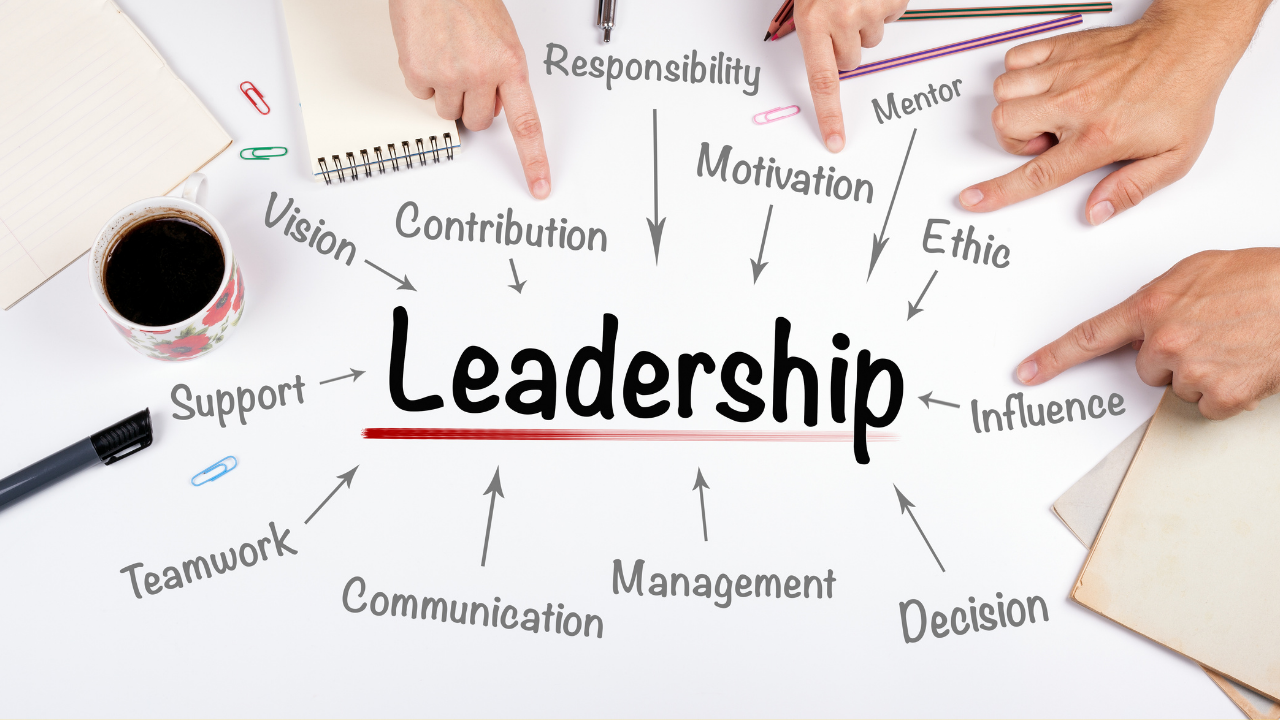Strong leadership is the backbone of any thriving organization. It influences how businesses operate, adapt, and excel in competitive markets. Leaders do more than just manage—they inspire, innovate, and guide their teams toward shared goals. From setting a vision to fostering employee engagement, effective leadership drives sustainable business performance and builds a foundation for long-term success.
Why Leadership Matters in Business

Leadership forms the cornerstone of organizational success. Without effective leadership, even the best resources, technologies, and market opportunities can go to waste. Leaders are responsible for creating a shared vision that unites everyone in the organization toward common goals. They provide clarity, direction, and motivation, ensuring that every employee knows their role in the bigger picture. Additionally, leadership plays a crucial role in building trust and fostering collaboration, both of which are essential for sustained business performance.
The Role of Visionary Leadership
Visionary leadership is about seeing the bigger picture and inspiring others to do the same. Strong leaders don’t just focus on immediate problems; they anticipate future challenges and opportunities.
Defining the Organization’s Purpose
Purpose-driven leadership provides a clear direction for the business. Leaders who articulate the “why” behind their actions inspire employees to work with passion and commitment. A clear purpose not only energizes teams but also aligns their efforts toward achieving strategic objectives.


Aligning Teams with Strategic Goals
Visionary leaders ensure that their teams understand and embrace the organization’s goals. This alignment is critical for eliminating silos, improving collaboration, and ensuring that all departments work in harmony. When employees are aligned with a shared vision, productivity and innovation flourish.
Building a Positive Organizational Culture
An organization’s culture is the foundation of its identity, and leadership is the primary driver behind it. A positive culture attracts top talent, fosters loyalty, and enhances performance.
The Influence of Leadership on Culture
Leaders set the tone for the workplace environment through their actions, words, and values. By promoting transparency, integrity, and respect, they create a culture of trust and accountability. Employees are more likely to thrive in an environment where they feel valued and supported.


Encouraging Collaboration and Inclusivity
Diverse perspectives lead to better decision-making and innovation. Effective leaders champion inclusivity and encourage open communication, making sure every employee feels heard and respected. This collaborative approach builds stronger teams and ensures better problem-solving.
Enhancing Employee Engagement
Employee engagement is a critical factor in driving business performance. Engaged employees are more productive, committed, and loyal, and leadership plays a pivotal role in fostering this engagement.
Motivating Through Trust and Communication
Leaders who communicate openly and build trust inspire their teams to give their best. Regular check-ins, feedback sessions, and transparent communication channels make employees feel involved and appreciated.


Recognizing and Rewarding Contributions
Recognition is one of the simplest yet most powerful motivators. Leaders who take the time to celebrate achievements and acknowledge hard work boost employee morale, leading to higher levels of engagement and performance.
Driving Innovation and Creativity

Innovation is the lifeblood of business success in today’s competitive landscape. Strong leadership creates an environment where creativity can flourish.
Fostering a Culture of Innovation
Leaders encourage innovation by providing employees with the freedom to experiment and the resources to succeed. A culture that rewards creativity and learns from failures fosters continuous improvement.
Encouraging Calculated Risk-Taking
Risk is inherent in innovation, but strong leaders help their teams approach it thoughtfully. By setting boundaries and providing guidance, they ensure that risks are manageable and lead to meaningful outcomes.
Adapting to Market Changes

The ability to adapt is a hallmark of strong leadership. Markets are constantly evolving, and businesses must pivot to remain relevant.
Leadership’s Role in Navigating Change
Effective leaders are proactive rather than reactive. They stay informed about market trends and prepare their teams for transitions, whether it’s adopting new technologies, entering new markets, or responding to customer needs.
Emphasizing Resilience and Flexibility
Resilience is critical during times of uncertainty. Leaders who promote a growth mindset help their teams embrace change as an opportunity rather than a threat, ensuring the business remains competitive.
Effective Decision-Making

Good decision-making is a cornerstone of leadership. Every choice a leader makes has the potential to impact the organization significantly.
Balancing Risk and Opportunity
Leaders who weigh risks against potential rewards make informed decisions that drive growth. They involve their teams in the decision-making process, ensuring a well-rounded approach.
Strategic Planning for Long-Term Success
Effective leaders think several steps ahead, setting strategies that position their businesses for sustained success. By aligning decisions with the company’s vision, they ensure consistency and clarity.
Improving Team Performance
Leadership has a direct impact on team performance. Strong leaders not only set high standards but also provide the tools and support needed to meet them.
Setting Clear Expectations
When leaders set specific, measurable, and achievable goals, teams perform better. Clear expectations eliminate confusion and keep everyone focused on the task at hand.


Providing Feedback and Support
Constructive feedback helps employees improve, while consistent support keeps them motivated. Leaders who invest in their teams’ development create a culture of continuous growth and high performance.
Leadership During Crises

Crises are the ultimate test of leadership. During uncertain times, strong leaders provide stability, clarity, and direction.
Maintaining Stability
In the face of adversity, leaders must remain calm and composed. This steadiness reassures employees and stakeholders, allowing the organization to navigate challenges effectively.
Communicating Effectively
Clear and honest communication is critical during a crisis. Leaders who keep their teams informed and address concerns build trust and ensure alignment, even in turbulent times.
Fostering Customer-Centric Values

Customers are the heart of every business, and leadership plays a crucial role in ensuring customer satisfaction.
Prioritizing Customer Needs
Leaders instill a customer-first mindset by emphasizing quality and responsiveness. This focus drives loyalty and enhances the company’s reputation.
Building Long-Term Relationships
Strong leadership fosters trust and rapport with customers. By consistently delivering value and addressing concerns promptly, businesses build lasting partnerships.
Developing Future Leaders

Leadership development ensures that organizations remain resilient and adaptable over time.
Mentoring and Coaching
Effective leaders invest in mentoring and coaching programs to nurture the next generation of talent. These initiatives prepare employees to take on leadership roles, ensuring continuity.
Creating Opportunities for Growth
By providing training and leadership opportunities, businesses create a strong leadership pipeline. This not only ensures stability but also fosters a culture of empowerment and ambition.
Boosting Financial Performance

Strong leadership is directly linked to better financial outcomes. Leaders influence everything from cost management to revenue generation.
Optimizing Resource Allocation
Leaders who allocate resources wisely maximize productivity and minimize waste, improving profitability.
Driving Sustainable Growth
Through strategic planning and innovation, leaders create opportunities for sustained revenue growth, ensuring the financial health of the organization.
The Human Side of Leadership

Leadership is not just about strategy; it’s also about connecting with people on a human level.
Empathy and Emotional Intelligence
Empathetic leaders understand and respond to their employees’ needs, building trust and loyalty.
Building Personal Connections
Leaders who take the time to know their employees create a supportive work environment where people feel valued and motivated.
The Digital Age and Leadership

Technology is reshaping the leadership landscape, offering new tools and challenges.
Embracing Digital Transformation
Leaders must stay ahead of technological advancements to keep their organizations competitive. From AI to cloud computing, leveraging digital tools enhances productivity and innovation.
Enhancing Communication
Digital platforms enable leaders to maintain seamless communication with their teams, fostering collaboration and efficiency.
Conclusion
Strong leadership is the cornerstone of business success. It drives performance, inspires innovation, and shapes a culture of collaboration and accountability. From setting a vision to fostering resilience, leadership touches every aspect of a business, ensuring sustainable growth and long-term success. In today’s fast-paced world, businesses that prioritize leadership development gain a significant competitive advantage, positioning themselves for success in the years to come.

